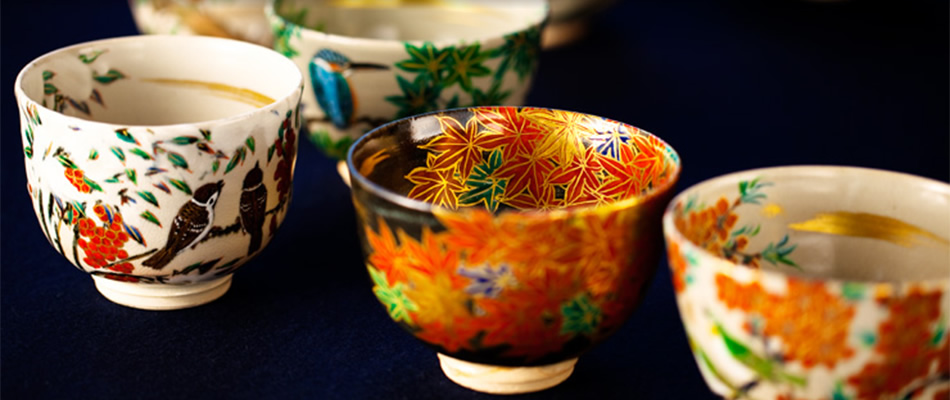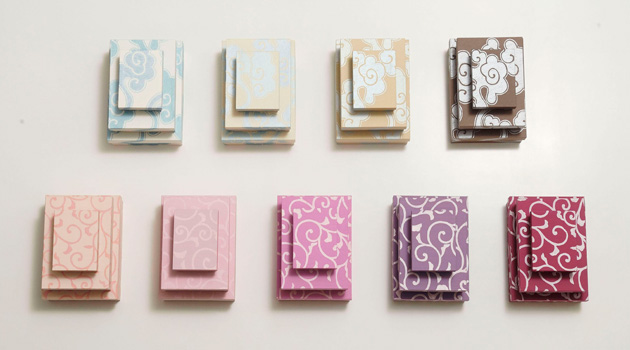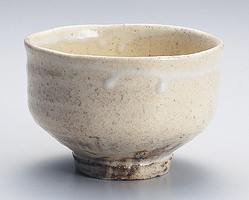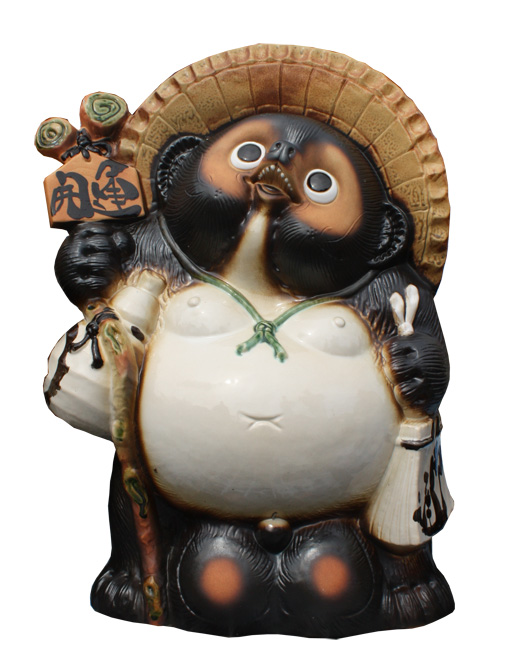
History of Kyo Ware / Kiyomizu Ware
Kyo Ware (京焼) / Kiyomizu Ware (清水焼) are typical traditional crafts of Kyoto Prefecture. They are both ceramics and pottery. They have 400 years of history, and now over 300 kilns are located in Kyoto Prefecture. Until the capital of Japan moved to Tokyo, Kyoto region had been the center of Japan, and it was the big market that many ceramics were gathered from all over Japan. Generally, it is considered that Kyo Ware / Kiyomizu Ware originated in the Momoyama period (ca. 1580-1600). This age was the time that the tea ceremony prevailed, and Kyo Ware / Kiyomizu Ware were used especially when people treated their guests. In other words, Kyo Ware / Kiyomizu Ware were a luxury at the time, and they were offering to the Emperor, the nobility, feudal lords, and temples. Until the Edo period (ca. -1600), Kyo Ware was the genetic name for ceramic ware that was baked in Kyoto region, and Kiyomizu Ware was just one kind of the ceramics. However, other kinds of Kyo Ware declined, and Kiyomizu Ware is the only kind that remains. Kiyomizu Ware is now also used as a synonym for Kyo Ware, but there are still slight differences between two terms. This is the reason why we call this ceramic ware with a double name (Kyo Ware / Kiyomizu Ware). In the Edo period (ca. 1600-1868), Ninsei Nonomura (also commonly known as Seiemon Nonomura), a ceramist, mastered a technique of Nishiki-de (a drawing skill. Especially red, green, yellow, purple, blue are used for it), and he played an important role in developing Kyo Ware / Kiyomizu Ware. Besides him, many ceramists (Kenzan Ogata, Eisen Okada, and Mokubei Aoki) were active in this era, and their work and techniques made the status of present Kyo Ware / Kiyomizu Ware unassailable. One of the factors that Kyo Ware / Kiyomizu Ware have thrived is that ceramists have succeeded to predecessors’ handworks and styles. Another important factor is that Kyo Ware / Kiyomizu Ware established the division of labor among material suppliers, ceramists who shape ceramics, ceramic painters, and potteries (potters). Techniques of Kyo Ware / Kiyomizu Ware were introduced to all over Japan and influenced much pottery, such as Kutani Ware.
Features of Kyo Ware / Kiyomizu Ware
First of all, Kyo Ware / Kiyomizu Ware has elegance and refined beauty as ceramics that thrive in Kyoto, the beautiful capital city in ancient times. Almost all manufacturing processes are done with hands. Ceramic painters are able to give the drawings a three-dimensional effect with their skills, so that Kyo Ware / Kiyomizu Ware look breathtaking and keep captivating us, and this is the point that printed paintings can never imitate. Many of the designs have a flavor of Kyoto, and they also give ceramics outstanding elegance. As mentioned above, as Kyo Ware / Kiyomizu Ware produced mainly with hands, their absolute quantity is always very small. On the other hand, sticking to handwork in most procedures makes ceramics able to have soft and warm feelings. Kyo Ware / Kiyomizu Ware have varieties of techniques, and these techniques give pattern and color variations on ceramics. (About varieties of coloring techniques are discussed in the next paragraph.) Compared with other Japanese ceramics or pottery, Kyo Ware / Kiyomizu Ware do not only rely on one special technique. In other words, they have been supported not by an exceptional technique, but by ceramists who grope for improvement of their works and devote themselves to it. However, ceramists needed to face difficulties to keep old techniques. Since an air pollution problem got more serious, the government decided to encourage potteries to change firewood kilns (which is the traditional type of kilns for Kyo Ware / Kiyomizu Ware) to electric kilns or gas kilns. It is actually not necessarily bad for Kyo Ware / Kiyomizu Ware, because it was a great opportunity to review and streamline manufacturing processes, and actually ceramists succeeded to increase productivity.
Colors of Kyo Ware / Kiyomizu Ware
Kyo Ware / Kiyomizu Ware have many color variations, but especially acombination of red and gold is peculiar to Kyo Ware. Since both colors are very loud, it is often difficult to make the perfectly balanced combination of them without a garish impression. Kyo Ware / Kiyomizu Ware are the rare examples that succeed to harmonize those two bright colors. On the other hand, Kyo Ware / Kiyomizu Ware have a technique called Some-tsuke, and this is an opposite color design to the last example. Some-tsuke is drawing designs on white ceramics only with indigo-blue paint. Among lovers for Japanese pottery and ceramics, there is a saying that deep interests in pottery and ceramics start from Some-tsuke and end with Some-tsuke. It means that Some-tsuke is simple yet appealing, fascinating, and very deep to understand and appreciate it. Besides these techniques, a technique and idea of Ninsei Nonomura, one of the famous ceramists (also mentioned in the first paragraph) play important parts in colors of Kyo Ware / Kiyomizu Ware. The interesting point of his works is that he succeeded to stimulate our imagination and our associations of colors. In one of his works (a teapot called Iroe eshimon chatsubo), he drew poppies with colors that are different from real colors of poppies. Wild poppies we can see in Japan usually have pink or light purple, but his painted with red, gold, silver and dark gray. Even though he did not paint them realistically, we can see and feel poppies even more real in his painting. This is the trick and technique he was good at. His bold attempt on coloring is very unique, and it is very appreciated as a big charm of Kyo Ware / Kiyomizu Ware.
How To Use Kyo Ware / Kiyomizu Ware
As mentioned in the beginning, Kyo Ware has two types: ceramics and pottery. In Japan, ceramics are also called as Ishi-mono which means ‘stone ware’ since ceramics are made of stones or rocks. Compared to pottery, ceramics are more solid, because they are baked in high temperature. Besides that, they are not absorbent of water, so that they rarely get stains. Pottery is called Tsuchi-mono, means ‘clay ware’. Pottery has a large variety of colors due to a wide variety of clay. It is high water absorbent and easy to get stains, especially from tea. Some people do not like this feature, but lovers of pottery are fascinated with this because they see the color change as a part of bringing up their own pottery. In other words, stains show how many times they use the pottery and make them feel they build memory or history together. It is similar to a perspective or a feeling that we appreciate well-used tools. If you still want to avoid having the stains on pottery, there are several things you can do not to make pottery get stained easily. One of the ways is soaking pottery overnight in water in which rice has been washed, and soaking just water or warm water right before you use.
There are some things you should be careful with when you use Kyo Ware / Kiyomizu Ware. Firstly, some of Kyo Ware / Kiyomizu Ware are not good at holding acidic or salty food for a long time, because their acidity makes the beautiful colors fade away. The other thing is microwaves. The use of microwaves also causes the colors fade away or changes them to darker colors. Especially gold and silver paints are very delicate and very weak to heat, so it is also recommended not to use dishwashers.
References
・日本セラミックス協会
http://www.ceramic.or.jp/museum/yakimono/contents/kyou/sanchi_kyou.html
・やまなか雅陶
http://www.yamanaka-gato.com/kiyomizuyaki.html
・清雅堂陶苑
http://www.seigado.jp/newpage2.htm
・NHK 美の壺
http://www.nhk.or.jp/tsubo/program/file212.html
・うまか陶(染付について)
http://www.nhk.or.jp/tsubo/program/file212.html





